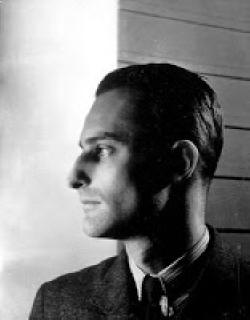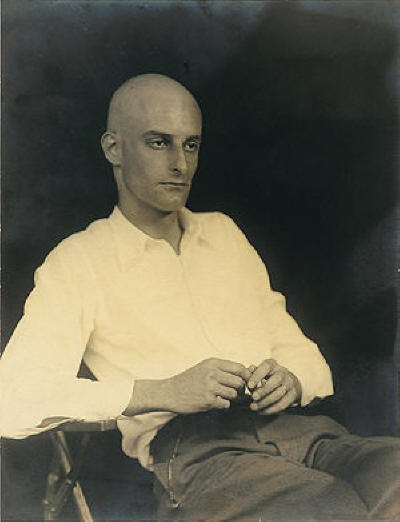

Queer Places:
Harvard University (Ivy League), 2 Kirkland St, Cambridge, MA 02138
602 Madison Ave, New York, NY 10022
15 E 57th St, New York, NY 10022
42 E 57th St, New York, NY 10022
 Julien Levy (January
22, 1906 – February 10, 1981) was an art dealer and owner of Julien Levy Gallery in New York City, important as a venue for Surrealists, avante-garde artists and American photographers in the 1930s and 1940s. Among the artists he exhibited (many for the first time in New York) were
Berenice Abbott, Henri Cartier-Bresson, Joseph Cornell, Salvador Dalí, Max Ernst, Walker Evans,
Frida Kahlo,
Man Ray,
Lee Miller, Ben Shahn, and Dorothea Tanning.
Julien Levy (January
22, 1906 – February 10, 1981) was an art dealer and owner of Julien Levy Gallery in New York City, important as a venue for Surrealists, avante-garde artists and American photographers in the 1930s and 1940s. Among the artists he exhibited (many for the first time in New York) were
Berenice Abbott, Henri Cartier-Bresson, Joseph Cornell, Salvador Dalí, Max Ernst, Walker Evans,
Frida Kahlo,
Man Ray,
Lee Miller, Ben Shahn, and Dorothea Tanning.
Levy was born in New York. After studying museum administration at Harvard under Paul J. Sachs, Levy dropped out,[1] traveled to Paris by boat, and befriended Man Ray, Marcel Duchamp, and Berenice Abbott, through whom he came into possession of a portion of Eugène Atget's personal archive. In Paris, he also met his future wife, Joella Haweis, daughter of artist and writer Mina Loy. At some point in his life, Julien Levy remarried to surrealist artist Muriel Streeter.[2] His connections with many other artists during this period of the 1930s and 1940s allowed Streeter to gain helpful insight with her own work during this time spent in and around Levy's New York gallery. [3] Back in New York, Levy worked briefly at the Weyhe Gallery before establishing his own New York gallery at 602 Madison Avenue in 1931. Concentrating at first on photography, he staged Man Ray's first major show, introduced Henri Cartier-Bresson to the U.S., and promoted many other European and American figures. On January 29th, 1932, there came the landmark multi-media Surrealist exhibition of the work of Pablo Picasso, Max Ernst, Joseph Cornell, Marcel Duchamp, and the introduction of Salvador Dalí's The Persistence of Memory (which Levy owned). He also championed the surrealist work of Leon Kelly. This exhibition marks the first in New York to display the works of members of the official surrealist group. [4]
A probable influence of Mark Tobey was the gay artist Pavel Tchelitchew, who created several images, such as The Thinker of 1927, in which the figure (usually male) is contained in a series of weblike lines. It is very likely that Tobey either personally knew or at least knew of Tchelitchew through his circle of artist friends while living in New York in the early 1930s. Coincidentally, Tobey's "white writing" development began right after Tchelitchew's first American exhibition at New York's Julien Levy Gallery in 1934.

Berenice Abbot made this portrait of Levy in Paris, just after he left Harvard to sail for Europe with Marcel Duchamp. His head is shaved as an homage to his father-in-law, the Dada poet-boxer Arthur Cravan, who shaved his head every summer and as a visible sign of Levy's avant-garde aspirations.
In 1937, the gallery moved to 15 East 57th Street, where Levy mounted the first solo exhibition of the work of Frida Kahlo, November 1 to 15, 1938. [5] From 1943 to 1949, the gallery was located at 42 East 57th Street. In 1945, Arshile Gorky had his first solo show there. After closing the gallery, Levy taught at Sarah Lawrence College and State University of New York at Purchase. Levy's books include Memoir of an Art Gallery and Surrealism.
My published books: